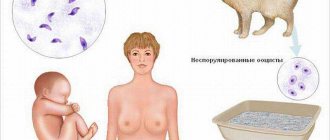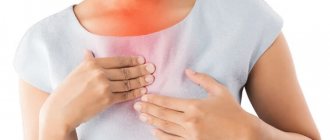A fever is an increased body temperature. A temperature is considered elevated when it is greater than 37.8°C measured with an oral thermometer or greater than 38.2°C measured with a rectal thermometer. Many people use the term “fever,” often meaning that they feel their temperature is too high, sometimes too low, “hot, cold,” or simply “sweating.” However, the temperature was not measured.
Although a temperature of 37°C is considered normal, body temperature varies throughout the day. Temperatures are lowest in the early morning and highest in the late afternoon, sometimes reaching 37.7°C. By the same principle, heat never remains at a constant temperature. Sometimes the temperature peaks every day and then returns to normal. This process is called intermittent fever. Or the temperature may change but not return to normal. This process is called relapsing fever. Doctors are no longer of the opinion that the pattern of temperature rise and fall is extremely important in the diagnosis of certain disorders.
Symptoms and features
A fever is an increase in temperature above the normal range. The natural temperature for humans can be slightly higher than the average of 36.6 degrees Celsius.
Content:
- Symptoms and features
- Types of fever
- Diagnosis of the disease
- Types of thermometers
- When should you see a doctor?
- Symptoms in adults
- Causes of fever
- Complications
Depending on what's causing the fever, additional signs and symptoms of a fever may include: sweating; chills; headache; muscle pain; loss of appetite; irritability; general weakness, etc.
Children aged 6 months to 5 years may experience febrile seizures. Statistically, about a third of children who have one febrile attack will have another (most often within the next 12 months).
To check the temperature of an adult or child, you can choose from several types of thermometers, including oral, rectal, ear (tympanum), and forehead thermometers.
Although this is not the most accurate way to measure temperature, you can use a classic thermometer - an armpit thermometer. To use it, you need to place the device in your armpit and cross your arms. It is recommended to keep the child during this period to limit his mobility. For the most accurate indicators, the measurement procedure should last at least 5 minutes. The axillary temperature is slightly lower than the temperature in the oral cavity.
What to eat, drink and wear in hot weather
— It’s quite simple: if the body asks for something, it needs to be given. It is only important to understand this. If it's hot, you might want to move to a cooler room and avoid being in the direct sun.
I note that the body is unlikely to ask for meat or porridge: all this requires intensive work of the digestive system, which is depressed in such weather and digests such food worse. It is better to eat fruits and vegetables, which contain a lot of liquid and are easier to digest. Yes, we get fewer calories, but in such conditions we need less, which is why our appetite decreases.
Drinking up to 5 liters of liquid per day is normal: if there is a lot of liquid, then it is much easier for the body to remove excess fluid than to save and save.
It is also important to wear weather-appropriate clothing. Thus, things made from natural fabrics do not interfere with heat transfer, unlike clothes made from synthetic materials: polyester, for example, interferes with heat transfer. Clothing should also not restrict movement and breathing.
Types of fever
Fever can be classified depending on how long the condition lasts and what temperature range it is associated with.
Temperature can be classified according to the following phenomena:
- hypothermia – up to 35 degrees Celsius;
- normal – from 35 to 37 degrees Celsius;
- hyperthermia - an increase in temperature above 37 degrees Celsius;
- fever – an increase in body temperature above 38 degrees Celsius with preservation of thermoregulation.
The height of the temperature can help indicate what type of problem is causing it. Temperature varies over time:
- acute type – duration up to 7 days;
- sub-acute – duration up to 14 days;
- chronic or permanent – lasting more than 14 days.
Fevers that persist for days or weeks without explanation are called “of unknown origin.”
Uniting people.
Among the many news stories dedicated to natural disasters and cataclysms, I would like to highlight those that show the positive actions of people in emergency situations. Speaking about examples of people in abnormal heat, it is interesting to consider how employees of the State Emergency Service in the city of Cherkassy independently installed an original device to combat the heat:
“In an attempt to alleviate the impact of abnormal temperature increases on citizens, in many cities in Spain, Portugal, Greece and even neighboring Poland, special water curtains are being installed on city streets. Powered by solar panels, they automatically start functioning when it gets hot outside. Having studied the European experience, Cherkassy rescuers decided to implement it, taking into account local specifics,” the press service of the State Emergency Service of the region said in a statement. Instead of solar panels, a pump and a container of water, the rescuers decided to use the city’s network of fire hydrants. As noted, the structure, called the “Security Gate,” was assembled in one day from the remains of building materials that were used during routine and major repairs in the departments.
In conclusion, I would like to remind you that only with the sincere unification of people on spiritual and moral principles is it possible to jointly overcome all future cataclysms and emergency situations that humanity faces in these difficult times.
“Why is it so necessary for people today to unite and learn to find common ground with each other and how to do this now? What can everyone do to help build relationships that are based on honesty, humanity and friendship? After all, only on this basis, having built its interaction, will humanity be able to overcome the impending large-scale cataclysms, signs of the approach of which we already see today with increasing speed. It is extremely naive to hope for help from any state in a consumer society, since the rulers of the state will primarily care not about people, but about their own benefit. Leaving such a number of forced migrants to the mercy of fate is extremely dangerous, because all this will ultimately result in aggression and wars for a piece of bread and a sip of water. We need to solve this problem today. It is necessary to understand that the roots of this problem grow from the selfish stereotyped attitudes of the consumer system, which is fractally repeated from the individual to society as a whole. The point is in the people themselves and it is necessary to change, first of all, the thinking of a person, the thinking of the world community from a consumer vector to a spiritual, moral, creative vector.”
Diagnosis of the disease
Diagnosis of fever is simple - the person’s body temperature is measured, if the readings are high, then fever is diagnosed. It is important that a person's temperature is checked at rest because physical activity stimulates an increase.
A person is diagnosed with a fever if:
- mouth temperature exceeds 37.7°C (99.9°F);
- temperature in the rectum (anus) exceeds 37.5-38.3 °C (100-101 degrees F);
- temperature under the armpit or inside the ear is greater than 37.2 degrees Celsius (99 degrees Fahrenheit).
Since a fever is a symptom and not a disease, once a doctor has confirmed that there is an elevated body temperature, he may order additional tests and investigations. Depending on what other signs and symptoms exist, these may include blood tests, urine tests, X-rays, CT scans, MRIs, etc.
Types of thermometers
For infants and preschool children, it is recommended to use safer thermometric devices: rectal, forehead, electronic, infrared. The most popular and accessible are rectal ones.
Rectal thermometers
Algorithm for using a rectal thermometer for infants:
- Apply oil cream (vaseline or regular sunflower oil) to the head of the device.
- Place the baby on his stomach.
- Carefully insert the head of the thermometer into the child's anus 1-2 centimeters.
- Hold the thermometer and the child for another three minutes.
Important: do not let go of the thermometer while it is inside the child. If your baby squirms, the device may go deeper and cause injury.
Ear thermometer
An ear thermometer is one of the safest variations of an infrared thermometer.
The device must be correctly installed in the child's ear to obtain the most accurate readings. Too much earwax can cause inaccurate results.
Temperature measurements using an ear thermometer are not accurate in young children and should not be used on children under 3 years of age (36 months). This is especially true in children under 3 months of age, when obtaining an accurate temperature is very important.
Electronic (oral) thermometer
Patients 4 years of age and older can take their temperature with an electronic thermometer under the tongue with the mouth closed.
Usage algorithm:
- Clean the thermometer with soapy water or wipe with alcohol and rinse thoroughly.
- Turn on and place its tip as close to your tongue as possible.
- The mouth should remain closed, as an open mouth may cause inaccurate readings.
- The thermometer should remain in place for about a minute or until you hear a beep. Check the numbers.
Important: Avoid hot or cold drinks for 15 minutes before the procedure to ensure correct readings.
When should you see a doctor?
A fever in itself cannot be a cause of alarm or a reason to call a doctor. However, there are some circumstances when you should still seek medical help.
Fever in children
Unexplained fever is a greater cause of concern in infants and children than in adults. You need to contact your local pediatrician if your child:
- is less than three months of age and has a rectal temperature of 38°C or higher;
- between 3 and 6 months of age and has a rectal temperature of 38.9°C or higher and appears unusually irritable or drowsy;
- between 6 and 24 months of age and has a rectal temperature greater than 38.9°C that lasts longer than one day but does not show any other symptoms.
If your baby also has other signs and symptoms, such as a cold, cough or diarrhea, you should call the doctor at the first sign of illness before serious complications arise.
If the child is active and the body temperature varies around 37 degrees Celsius, it is important to provide him with adequate nutrition and plenty of fluids. The reason for this kind of temperature change can be various factors: emotional and physical stress, stress, etc.
You need to call your doctor urgently if your child:
- lethargic and irritable, repeatedly vomiting, severe headache, abdominal pain, or any other symptoms causing significant discomfort;
- has a fever after prolonged exposure to the sun or in a very warm room (overheating is suspected);
- stays with a high body temperature for more than three days;
- refuses to eat, refuses to play, and does not want to come into contact with anyone.
It is important to closely monitor the child’s condition during the period of fever, since this symptom may demonstrate the presence of serious diseases, pathologies or inflammatory processes in the body.
Prevention
Hygiene – Fever is usually caused by bacterial or viral infections. Good hygiene practices help reduce the risk of infection. This includes washing your hands before and after eating and after using the toilet.
A person with a high fever caused by an infection should have as little contact with other people as possible to prevent the infection from spreading. Caregivers should wash their hands regularly with warm water and soap.
We've selected related products based on product quality and listed the pros and cons of each to help you determine which ones will work best for you. We have partnerships with some of the companies who sell these products, which means Healthline UK and our partners may receive a share of the revenue if you make a purchase through the link(s) above.
Symptoms in adults
Seek medical help when your body temperature reaches 39.4°C or higher. Seek immediate medical attention if any of these symptoms accompany a fever:
- Strong headache;
- unusual skin rash, especially if the rash progresses quickly;
- unusual sensitivity to bright light;
- stiff neck and pain when tilting the head;
- mental confusion;
- constant vomiting;
- difficulty breathing or chest pain;
- abdominal pain or pain when urinating;
- convulsions.
Causes of fever
Fever is the result of the body's immune response to pathogenic bacteria and foreign microorganisms. Among them: viruses, bacteria, fungi, drugs or other toxins.
These substances are considered fever-producing substances (called pyrogens) and trigger the body's immune response. Pyrogens activate the hypothalamus in the brain to increase body temperature to help the body fight infection.
A fever occurs when an area in the brain called the hypothalamus—also known as the body's "thermostat"—shifts the maintenance of normal temperature upward. The person may feel cold and may add layers of clothing or wrap themselves in a blanket and may shiver to provide more heat to the body, ultimately leading to an elevated temperature (fever).
Normal values vary throughout the day - they are lower in the morning and higher in the afternoon and evening. Although most people consider 36.6°C normal, a healthy person's body temperature can range from about 36.1°C to 37.2°C - this is considered normal.
The fever itself is not contagious, but if the cause of such a symptom is viruses and bacteria, then a healthy person can acquire the disease itself.
Best materials of the month
- Coronaviruses: SARS-CoV-2 (COVID-19)
- Antibiotics for the prevention and treatment of COVID-19: how effective are they?
- The most common "office" diseases
- Does vodka kill coronavirus?
- How to stay alive on our roads?
Fever or elevated body temperature can be caused by: viral and bacterial infections, as well as the diseases they lead to; heat stroke; certain inflammatory conditions such as rheumatoid arthritis, an inflammation of the joints; malignant tumor; certain medicines (antibiotics and medicines used to treat high blood pressure or seizures); neurotic condition - thermoneurosis.
Sometimes the cause of the fever is not identified. If a patient has a fever for more than three weeks and the doctor cannot find a cause after extensive evaluation, the diagnosis is “fever of unknown origin.”
Treatment
Nonsteroidal anti-inflammatory drugs (NSAIDs), such as aspirin or ibuprofen, may help relieve a fever. They can be purchased over the counter or online. However, a mild fever may help fight the bacteria or virus that is causing the infection. It may not be ideal to tear it down.
If the fever is caused by a bacterial infection, your doctor may prescribe an antibiotic.
If the fever is due to a cold that is caused by a viral infection, NSAIDs may be used to relieve uncomfortable symptoms. Antibiotics do not work against viruses and are not prescribed by a doctor to treat a viral infection.
Fluid intake: Anyone with a fever should drink plenty of fluids to prevent dehydration. Dehydration will complicate any illness.
Heat stroke: NSAIDs will not be effective if a person's fever is caused by hot weather or prolonged strenuous exercise. The patient needs to be cooled. If they become confused or unconscious, seek medical attention immediately.











